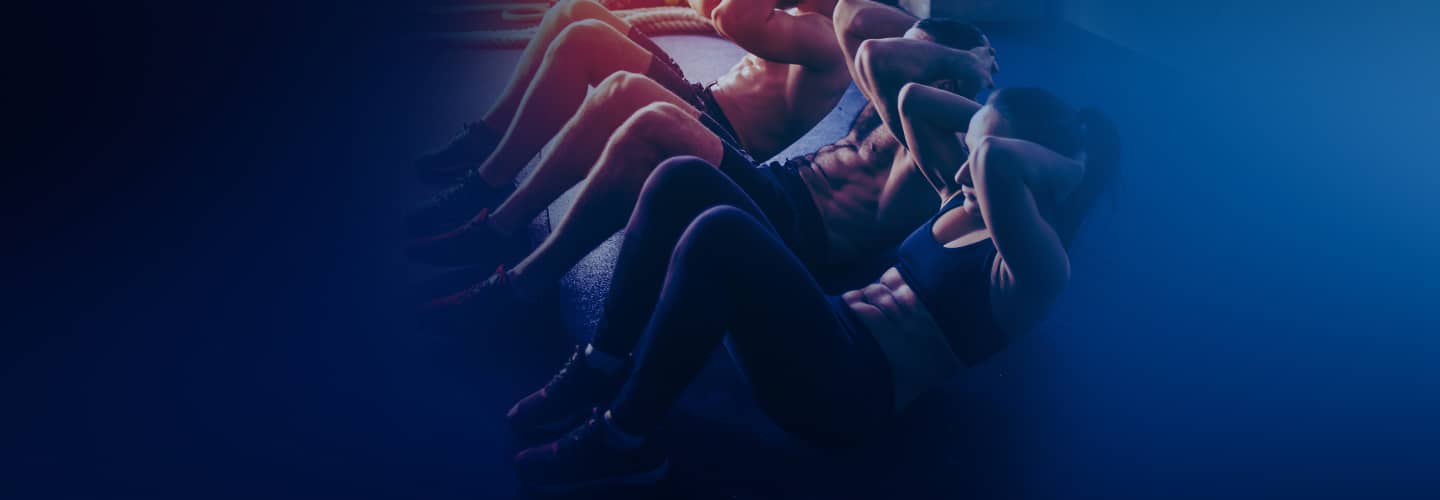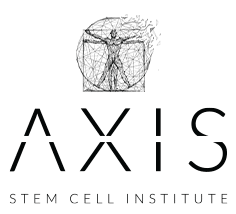
Sports Injuries
our areas of focus
What are Sports Injuries?
There are many different important systems at work in your body when you’re active and moving. Your respiratory and circulatory systems work together to make sure that your body has energy, while your musculoskeletal system supports movement and fluidity. Unfortunately, your musculoskeletal system can be susceptible to injuries if you move the wrong way or push your body’s limits. Many sports injuries occur in the joints or muscles, where the soft tissues experience strain and stress. In the event of a sports injury, stem cells can be used to regenerate and heal tissues, allowing you to get back to your healthy lifestyle quickly and effectively.
What Causes Sports Injuries?
There can be many different things that cause sports injuries, but they most often happen suddenly and painfully. This can occur because of strain, twisting, collision, or many other factors when you’re active. Each injury and circumstances are unique, so we begin with understanding your anatomy, lifestyle, and symptoms.
Common Sports Injuries
Knee Injuries
The knees are an important support structure that is designed to move effectively and in tandem with your lower body. There are, however, many delicate and important tissues contained within and around your knees that can be prone to injuries. These can often be extremely painful and inhibit your ability to move freely. Most commonly, injuries occur in the meniscus (cartilage that cushions the contact between the shin and thigh bones), the anterior cruciate ligament (one of four main ligaments that connect the thigh and shin bones), and the patellar tendon (a tendon responsible for straightening the leg that inserts at the knee cap).
Meniscus Tears
The meniscus is a C-shaped disk of cartilage that exists between the bones of the knee. It acts as a shock absorber during impact, protecting the bones and joints from damage. Tears in the meniscus can happen during activities that involve twisting or turning the upper leg while the foot is planted. Meniscus tears can be painful and interfere with the normal range of the knee.
ACL Tears
The anterior cruciate ligament (ACL) is a strong band of tissue that connects your thigh and shin bones in the knee. ACL tears are common during sports that require a sudden twisting motion and excessive pressure in the knee like basketball, football, tennis, and skiing. ACL tears can be partial or complete and can take a very long time to heal without intervention.
Jumper’s Knee
Patellar tendonitis, or jumper’s knee, is a condition where the patellar tendon becomes inflamed. The patellar tendon stretches over the front of the kneecap and helps the leg extend. Jumper’s knee is common in athletes who jump often while playing their sport. This type of overuse is common in sports like basketball and volleyball.
Shoulder and Elbow Injuries
Both the shoulder and elbow are responsible for allowing you to effectively move your arms and use your hands. Just like other joints, however, they can be subject to injuries if they are strained, twisted, or overused. Injuries to your shoulders or elbows can limit your ability to accomplish everyday tasks like lifting things or dressing without pain or discomfort. Injuries in the shoulder or elbow can commonly affect areas like the ulnar collateral ligament (a ligament that connects the upper arm to the forearm), and the tendons that support the elbow. Injuries that affect the shoulder can result in conditions like bursitis, where small, fluid-filled sacs that cushion the joint become inflamed and irritated.
UCL Tear
The ulnar collateral ligament (UCL) is a strong band of tissue that tethers the bones of the arm together at the elbow. UCL tears can happen from overuse in athletes that make a throwing motion often (as in baseball or football) or as a result of falling with an outstretched arm. A UCL tear can cause instability in the arm as it allows the bones to move too much.
Tennis Elbow
Tennis elbow (lateral epicondylitis) is a common sports injury where the tendons that connect the forearm muscles to the elbow are overused – typically because of repetitive motions with the wrist and arm. This causes inflammation that makes it difficult to use a full range of motion. Pain is typically felt on the outside of the elbow and as the name suggests, it’s common in athletes who play tennis.
Golf Elbow
Golf elbow (medial epicondylitis) is another injury that affects the elbow, typically on the inside. It occurs in the tendons and tissues that attach the muscles of the forearm to the elbow. It’s caused by repetitive motions with the wrist and fingers, causing inflammation and stiffness in the whole lower arm.
Bursitis
In the anatomy of the joint, tiny fluid-filled sacs called bursae are responsible for cushioning the bones, tendons, and muscles. Bursitis is a condition where these sacs become inflamed and cause pain in the joint. It’s most common in joints that experience repetitive motion like the shoulders, knees, elbows, and hips.
Ankle and Foot Injuries
The ankles and feet, like the knees, are subject to injury when you move wrong or put too much weight on one area. This can usually result in sprains and strains that affect the ligaments and tendons, resulting in pain or discomfort during regular movements. This can even mean you have difficulty walking or being on your feet for long periods of time. Ankle and foot injuries aren’t always the result of sports injuries, since spraining or straining your ankle can occur in everyday life events like walking over an uneven path.
Ligament and Tendon Tears
Tears to the ligaments and tendons can be very painful. The most common symptoms of these types of injuries include pain, swelling, and even a feeling of popping or instability. Ligament and tendon tears typically occur during active sports where you make a sudden twisting movement or put too much force on a single joint.
Sprains and Strains
Sprains are injuries to the connective tissues that hold two bones together. Strains are injuries to the muscles or bands of tissue that connect muscles to bone. Sprains and strains typically happen when the area is overextended by wrenching, twisting, or overuse. Some of the most common sprains and strains happen in areas like the ankles, knees, thumbs, or wrists.
Learn More About How Stem Cells Can Help
If you live an active lifestyle, then an injury can affect more than just your body. Injuries to important musculoskeletal tissues can require a lot of time and patience when it comes to healing, meaning you’re unable to remain active and healthy. Both stem cells and platelet-rich plasma derived from your own tissues can help to boost your body’s healing and rejuvenation functions through growth factors and tissue regeneration. Learn more about stem cells and platelet-rich plasma.
Sports Injuries FAQs
Can stem cells heal scar tissue?
Stem cell therapy can help reconstruct and minimize scar tissue from previous injuries and burns by decreasing inflammation and upregulating the collagen and elastin modeling process
Can stem cells remove scar tissue?
Stem cell therapy can help to limit scar tissue formation in a new injury as well as reduce the appearance of old scars from previous injuries or burns.
Can stem cells repair torn ligaments?
Stem cells can help heal your damaged tissue, including ligaments by regenerating and repairing torn fibers and stimulating the bodys natural healing response.
Can stem cells repair torn tendons?
Stem cells help your body repair damaged tissues caused by injuries by speeding the process of regenerating new, healthy cells. By introducing undifferentiated cells into damaged tissue and joints, stem cells have the ability to communicate and form into the tissue thats affected, allowing for healing of the injury and a reduction in pain.
Schedule a Consultation
At Axis Stem Cell Institute, we understand that activity and excelling at your sport are both an integral part of your lifestyle. Unfortunately, injuries can inhibit you from chasing your goals and living your best life. We seek to offer the best and latest in sports medicine and regenerative techniques to ensure that you can get back on your feet quickly and without discomfort. It can feel like your only options are therapy and waiting for your body to heal, so we offer the best and most up-to-date information about stem cells and regenerative medicine so you can make the best choice for your health and your body.
Platelet-rich plasma can help your body heal quickly and efficiently using your body’s own functions. Speaking with our stem cell experts is a great first step in learning about your therapeutic options. To schedule a consultation at our Seattle or St. Petersburg office call 206.823.0960 or fill out our online form.
Not ready for an appointment? ask us below!


